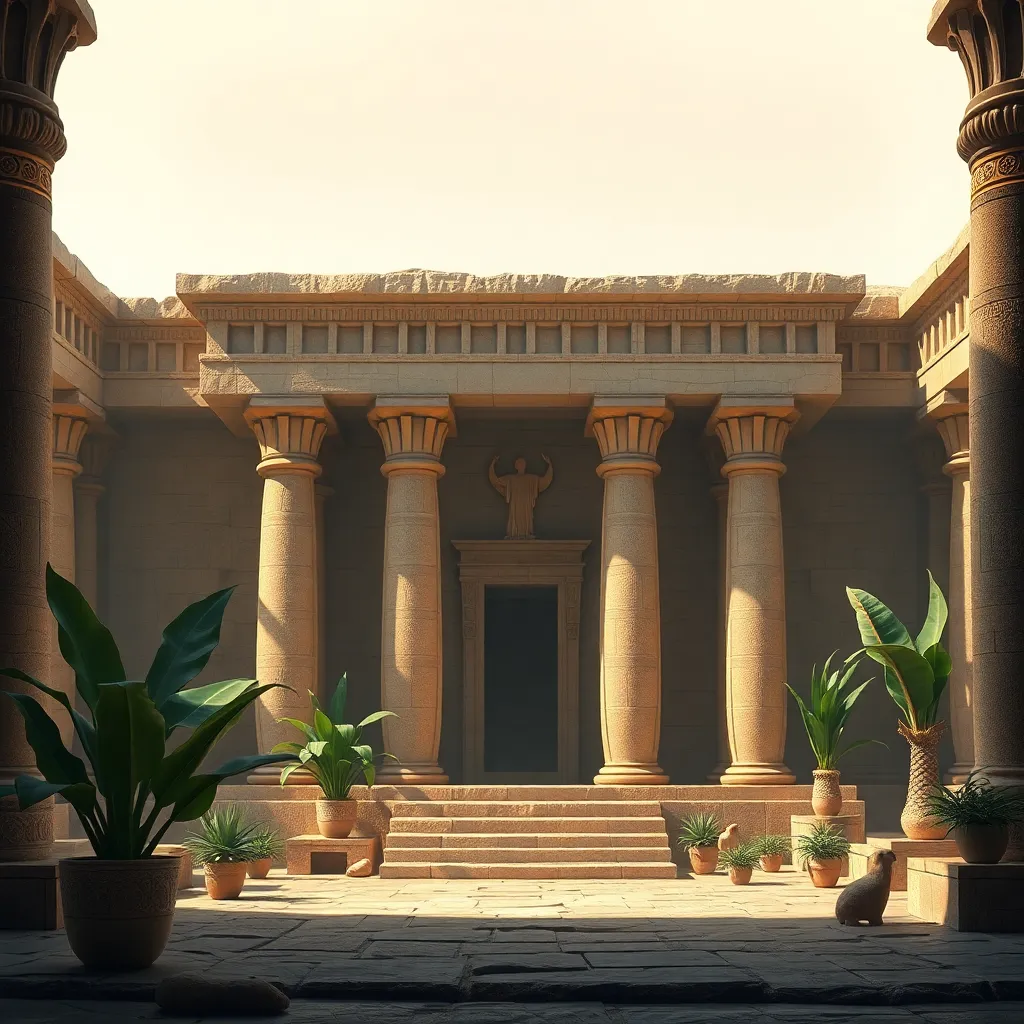The Sacred Plants of Ancient Egyptian Temples: An Exploration of Spirituality and Botany
I. Introduction
Ancient Egyptian religion and spirituality were deeply intertwined with the natural world, reflecting a profound respect for the divine forces that governed life. The ancient Egyptians believed that their gods and goddesses were manifested in the flora around them, particularly in sacred plants. These plants were not only vital for daily life but also played a significant role in temple rituals and spiritual practices.
This article aims to explore the significance of sacred plants in Ancient Egypt, examining their roles in rituals, their symbolism, and their connections to the deities worshipped in the temples.
II. Historical Context of Sacred Plants in Ancient Egypt
Botany held a crucial position in Ancient Egyptian society, serving both practical and spiritual purposes. The lush banks of the Nile provided an abundance of flora, which was utilized in everything from food to medicine.
Temple architecture itself often reflected a connection to nature, with gardens and sacred groves integrated into the temple complexes. Historical texts, such as the Pyramid Texts and various religious papyri, reference the use of sacred plants in rituals, offering insights into their significance.
III. Key Sacred Plants and Their Symbolism
Several plants were considered sacred in Ancient Egypt, each with its unique symbolism and uses:
A. Lotus (Nymphaea caerulea)
- Symbolism of creation and rebirth: The lotus flower, which rises from the mud to bloom above the water, symbolized creation, rebirth, and the cycle of life.
- Use in art and architecture: The lotus was often depicted in temple reliefs and was a common motif in architectural designs, representing purity and the divine.
B. Papyrus (Cyperus papyrus)
- Significance in writing and record-keeping: Papyrus was essential for the creation of scrolls, making it a cornerstone of Egyptian literacy and record-keeping.
- Spiritual connotations and rituals: Papyrus was also used in religious rituals and was associated with the goddess Ma’at, representing truth and order.
C. Frankincense and Myrrh
- Their role in incense and offerings: Both frankincense and myrrh were commonly used as incense in temples, believed to carry prayers to the gods.
- Symbolism of purification and connection to the divine: These resins were considered purifying agents, fostering a connection between the earthly and the divine.
IV. Ritual and Ceremonial Uses of Sacred Plants
Sacred plants played a central role in many religious practices in Ancient Egypt. Their uses included:
- Plant-based offerings in temple worship: Worshippers would present offerings of sacred plants to the gods, believing these gifts would earn divine favor.
- Use of plants in healing rituals and medicine: Many plants were utilized in traditional medicine, with practitioners employing their properties in healing rituals.
- Seasonal festivals and the role of plants in celebrations: Various festivals celebrated the agricultural cycles, with plants playing a central role in the festivities.
V. The Connection Between Sacred Plants and Deities
Certain plants were closely associated with specific gods and goddesses, reflecting their divine attributes:
- Plants associated with specific gods and goddesses: The lotus was linked to the sun god Ra, while papyrus was associated with the goddess Isis.
- Myths and stories that highlight plant deities: Many myths describe the creation of the world through plants, illustrating their divine origins.
- Influence of divine associations on agricultural practices: The reverence for these plants influenced agricultural practices, with farmers often invoking deities for blessings on their crops.
VI. Sacred Plants in Ancient Egyptian Art and Iconography
Art and iconography in Ancient Egypt frequently featured sacred plants, serving both aesthetic and symbolic purposes:
- Depictions of plants in temple reliefs and hieroglyphs: Plants were often carved in reliefs, symbolizing life and fertility.
- The significance of plant motifs in sculptures and paintings: Artists incorporated plant motifs to convey spiritual meanings and to honor the gods.
- Interpretation of plant imagery in the context of spirituality: The imagery of plants in art was a visual representation of the interconnectedness of nature and divinity.
VII. Modern Perspectives on Ancient Egyptian Sacred Plants
Today, the legacy of Ancient Egyptian sacred plants continues to influence contemporary practices:
- Influence on contemporary herbalism and spirituality: Many modern herbalists draw on the knowledge of ancient practices, incorporating these sacred plants into holistic healing.
- Archaeological discoveries and their implications for understanding ancient practices: Ongoing archaeological work sheds light on the uses and significance of these plants in ancient rituals.
- Preservation of traditional knowledge related to sacred plants: Efforts are being made to preserve the traditional uses and cultural significance of these plants in modern society.
VIII. Conclusion
Sacred plants held immense significance in Ancient Egyptian temples, symbolizing the connection between the natural world and the divine. Their roles in rituals, their associations with deities, and their depictions in art reflect a rich tapestry of spirituality and botany that continues to resonate today.
As we delve deeper into the ancient practices surrounding these plants, we not only uncover the wisdom of the past but also recognize the enduring legacy of sacred plants in our contemporary lives. Further research and appreciation of ancient botanical knowledge can help us understand the vital role these plants played in shaping one of history’s most fascinating civilizations.




